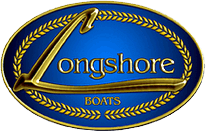How to Flush Your Yamaha Outboard Engine: A Step-by-Step Guide
Welcome to our comprehensive guide on how to properly flush your Yamaha outboard engine. Regular flushing of your outboard engine is essential for it's proper maintenance and longevity.
Step 1: Gather Your Materials
Firstly, gather your materials. You will need engine muffs, a salt-away nozzle, and a salt-away product. This product is fantastic as it dissolves salt, is biodegradable, non-toxic, and can be used on the water.
Step 2: Position Your Engine
Next, you need to properly position your engine. Tilt your motor as far down as you can. (but It doesn’t have to be all the way down if that position is not possible)..
Step 3: Access Your Freshwater Hookup
Locate the freshwater hookup on the side of the engine. Then thread the freshwater supply hose into the hookup..
Step 4: Use Salt-Away Nozzle
At Longshore, we recommend using the Salt-Away nozzle. If you have a Salt Away nozzle, fill it up all the way and thread the hose into the nozzle. Then, thread the nozzle into the water hookup which connects to the flushing hookup.
Step 5: Start Flushing
Turn the freshwater supply on and let it run for a couple of minutes. You will see water start coming out from different areas of the engine like the prop hub, the backside of the gear case, and the pedo tube.
Step 6: Switch to Salt-Away
After running fresh water for about 5 minutes, switch the connector over to the Salt-Away position. You will see a lot of foam coming out of all different parts of the engine. Leave it there for about 10 minutes.
Step 7: Disconnect and Secure
Afterwards, disconnect your flushing hookup and make sure it is threaded in the right position and tight. If it comes loose while you’re running your engine on the water as it could lead to overheating.
Alternative Method: Using Ear Muffs
Another way to flush your engine is by using ear muffs. Place the muffs over the high-speed water pickups and make sure they are fully covered. Hook up your hose to the muffs and the turn on the freshwater supply.
Remember, Yamaha recommends running the engine only when you have your engine muffs on so that you keep the engine sucking water from the impeller. This fills the whole system with water which prevents overheating.
Watch the YouTube video above by Gian to see the entire process from start to finish. We hope this guide will be useful. For more information about Longshore Boats repair service, maintenance or sales, call 843-216-4700 or click here to contact us now.
